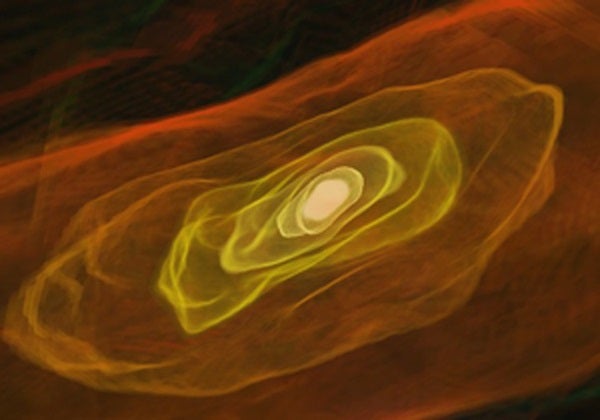Created in the first 3 minutes after the Big Bang, hydrogen and helium gave rise to all other elements in the universe; stars made this possible. Through nuclear fusion, stars generated elements such as carbon, oxygen, magnesium, and all the other raw materials necessary for making planets and, ultimately, life. But how did the first stars come to be? It all hinges on hydrogen atoms coming together to form hydrogen molecules. New research from Columbia University sheds light on this process.
“In order for us to follow the chain of events responsible for how we got here, we need to understand the beginning,” said Daniel Wolf Savin from Columbia University’s astrophysics laboratory.
“I’m excited to have worked on such a challenging interdisciplinary problem with an international cast of stars,” said Savin. “To discern the importance of the reaction at the very beginning required a cosmologist who understood the physics of first star formation and a physicist who understood the underlying chemical reactions. Together, cosmologist Simon Glover from University of Heidleberg and I were able to identify the key chemical reactions that needed to be better understood so that we could more reliably model the formation of the first stars.”
“Once we determined what needed to be studied, then the question became one of how,” said Savin. “We assembled the necessary expertise and experimentalists to build a novel apparatus to measure the reaction. I did this work with colleagues Holger Kreckel Hjalmar Bruhns and Ken Miller from Columbia in the city of New York, and Xavier Urbain from Universite Catholique de Louvain in Belgium. But measuring the reaction was not enough. We also needed to calculate it. Theoretical physicist Martin Cizek from Charles University in Prague did just that.”
Savin’s research details a key chemical reaction that took place in the universe about a million years after the Big Bang. That reaction, called associative detachment, allowed clouds in the universe to cool, condense and form the first stars.
“In order to understand how the first stars formed, we need to know how the clouds that gave birth to them cooled. Molecular hydrogen (H2) radiated the heat out of the clouds, so we need to know how much H2 was in the cloud. This in turn requires understanding the chemical process by which the H2 formed. That’s what we’ve measured,” said Savin.
H2 is formed when two hydrogen atoms come together and bind to one another to make a molecule. Savin’s group measured this probability. His results show that the likelihood for this is higher than previous theoretical calculations and experiments have shown.
“The previous uncertainty in this reaction limited our ability to predict if a cloud of gas would form a star or not, and if it did, then what the mass of that star would be,” said Savin. “That’s an important thing to quantify, because the mass of a star determines the elements it will synthesize.”
The predicted masses for the first stars depend on the initial conditions of the primordial clouds from which they formed. These conditions are highly uncertain and still an active area of research. By comparing model predictions to observations of the universe astronomers can approximate what these initial conditions must have been. But the accuracy of these estimates depends critically on our understanding of the underlying chemical reactions, particularly those measured by Savin and his group. With the new data in hand, cosmologists will be better able to determine what the initial conditions were in the early universe leading to the formation of the first stars.










